Birding in Khijadiya Bird Sanctuary in Jamnagar, Gujarat
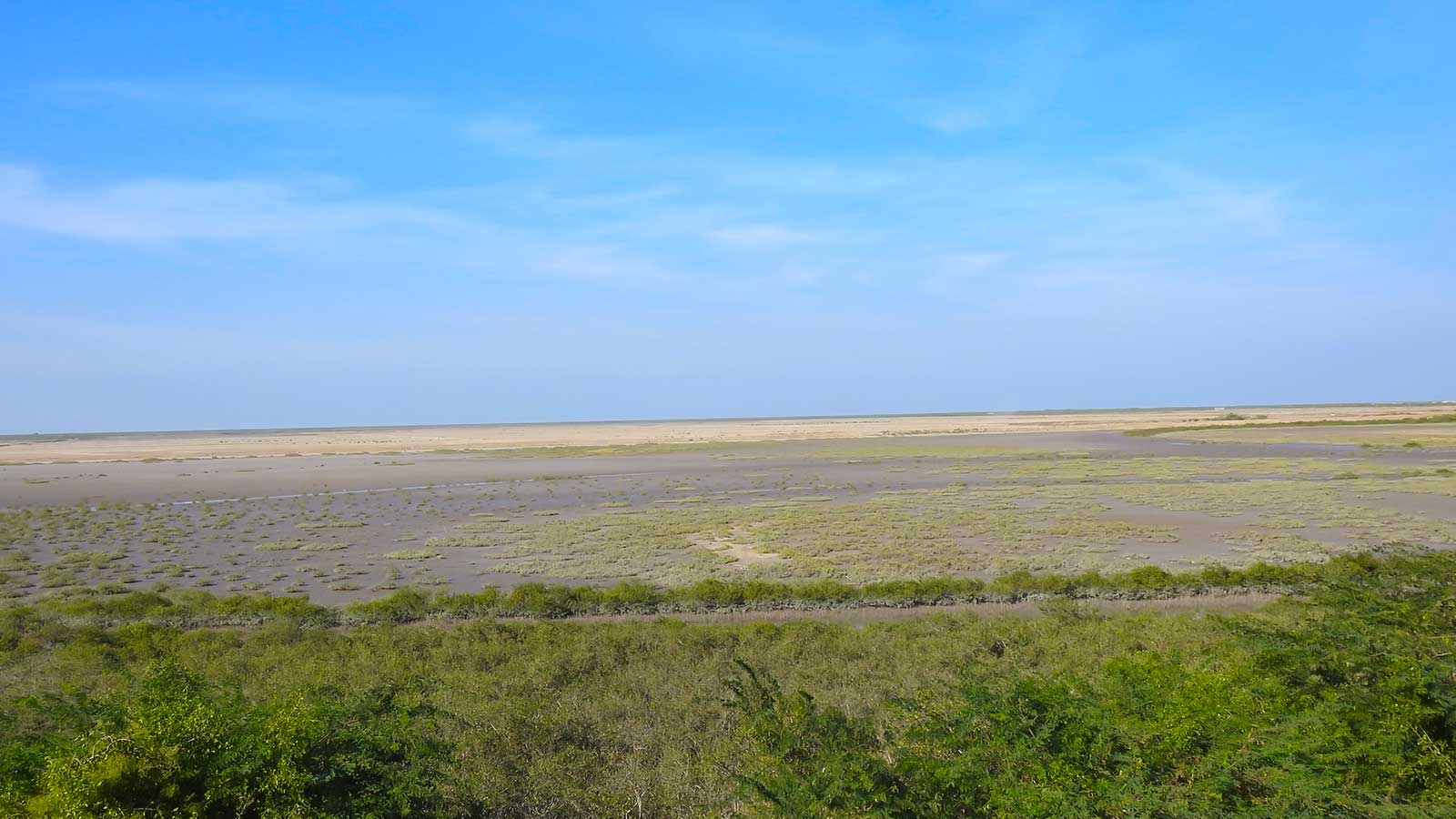
In our Gujarat Road Trip our last stop was Jamnagar. We planned to visit Jamnagar just for the Marine Sanctuary. But when we checked in map, we saw the Khijadiya Bird Sanctuary nearby. So we decided to drop in for a quick peek and then proceed to Jamnagar but it turned out this place cannot be covered with a quick stopover.
We were travelling from Great Rann Of Kutch to Jamnagar which was a 7 hours travel. We left our homestay in Hodka Village very early in the morning (more like night ) and started to Jamnagar. There were many roadblocks and traffic diversions, so we reached near Jamnagar around noon. We didn’t have any food till that time and we were in dilemma whether to proceed to our stay and refresh or stop at Khijadiya Bird Sanctuary. When we were near Khijadiya, we saw a flock of Great White Pelicans circling above a waterbody. As per the map, Khijadiya Bird Sanctuary was in that direction. So without second thought we drove to the bird sanctuary. There were no vehicles in the parking and I hesitantly stepped to the ticket counter. The lady ticketer asked me which trail we were going to take and I had no clue. Then she surprised me by showing a brochure with map. One trail was accessible by car and another by walk. We selected the walking trail , paid the entrance fee and drove to the entrance of the trail.
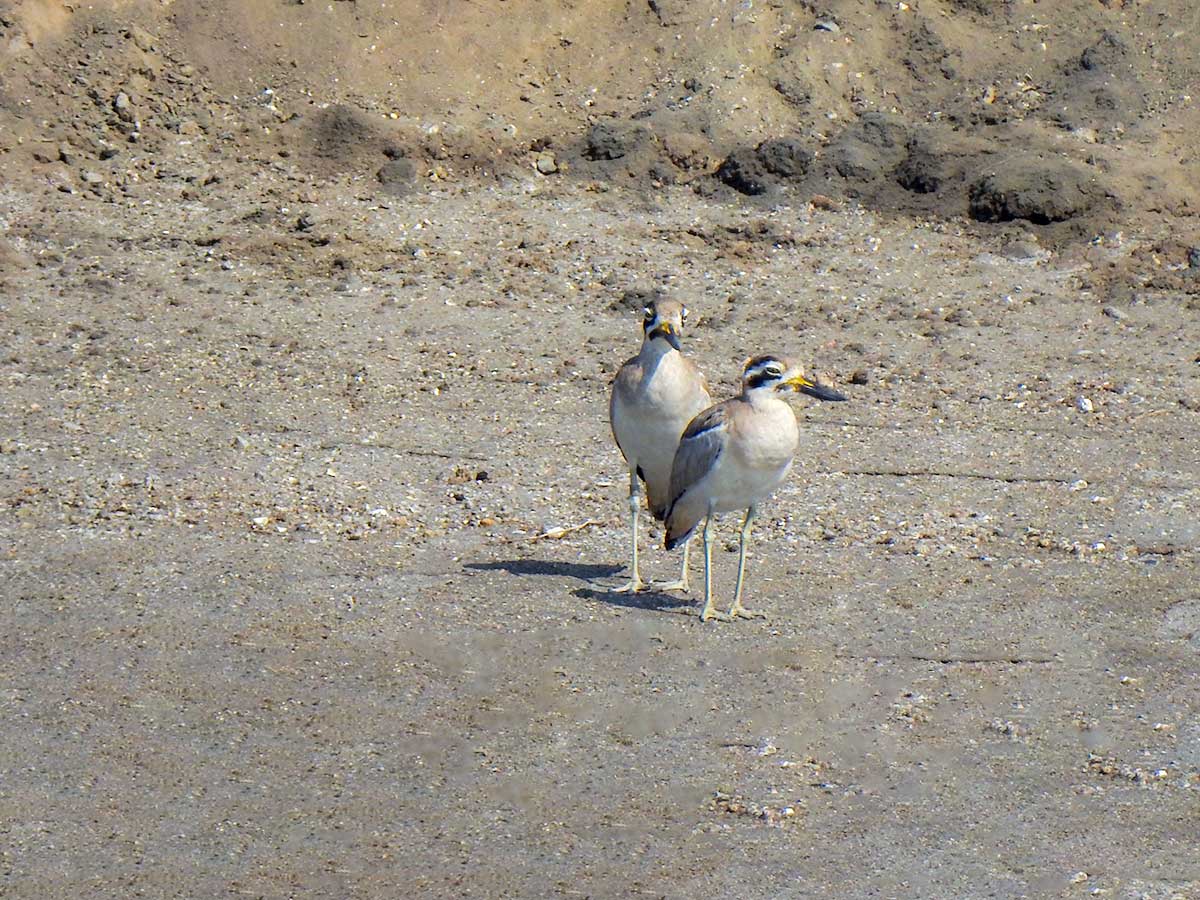
There was a guard to check our tickets and there were school kids who came for an outing, other than that there was nobody. Noon is not an ideal time for birding but for waterbirds it shouldn’t matter, so we started seeing birds in the waterbodies. There were good number of waterbirds and we started our binocular birding excitedly. The Sanctuary has both freshwater and salt water which made the ecosystem very unique. On the freshwater side , there was a pair of Crested Grebe who were swimming casually along the water edges and ducks like Nothern Pintail, Common Teal, Common Pochards were in the middle of the lake. In the brackish side of the sanctuary , there were plovers, gulls and spoonbills foraging . We forgot all about our hunger and started exploring the sanctuary with more enthusiasm.
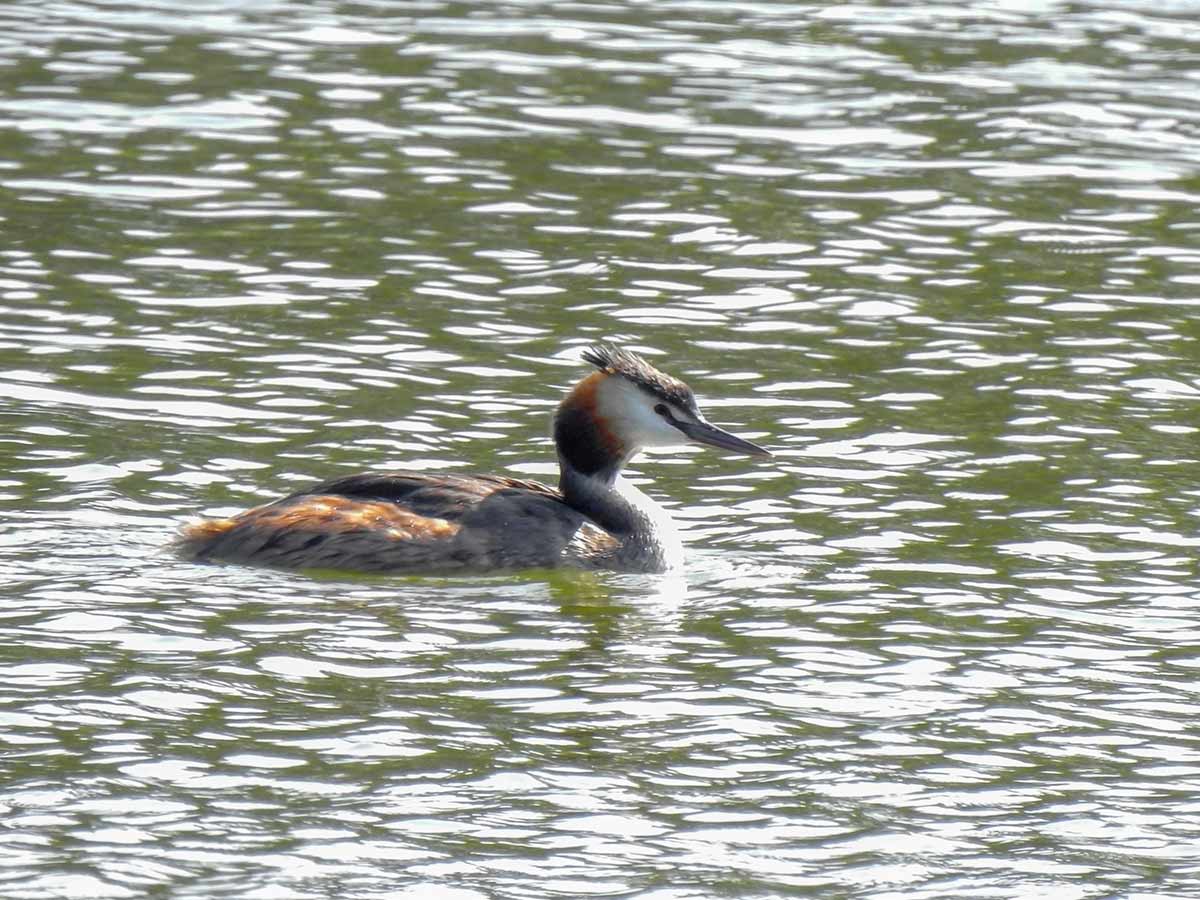
White-cheeked bulbuls and Larks were frolicking on the toothbrush trees that were planted on the trail edges. We heard a shrill sound suddenly and after careful search spotted three Great Thick-Knees were making that sound. They were in deep discussion and I was seeing those birds for the first time. Vinod had already seen Great Thick-Knee in Rameswaram during his solo trip. So I was very excited to have an lifer in Khijadiya Bird Sanctuary. The major attraction of this sanctuary is the Black-necked Stork. The sign board for this Stork was displayed in multiple places and we were very confident that we could get a good view of this endangered Black-necked Stork in Khijadiya. We had seen the Black-necked Stork in Keolodeo National Park but at a distance. So we were keeping an eye for this huge stork and continued our walk.
Soon we were stopped by a flock of plovers and sandpipers who were enjoying in a puddle of water near the trail. I love these small birds but today I was casually enjoying rather than keenly identifying all the species in the flock.
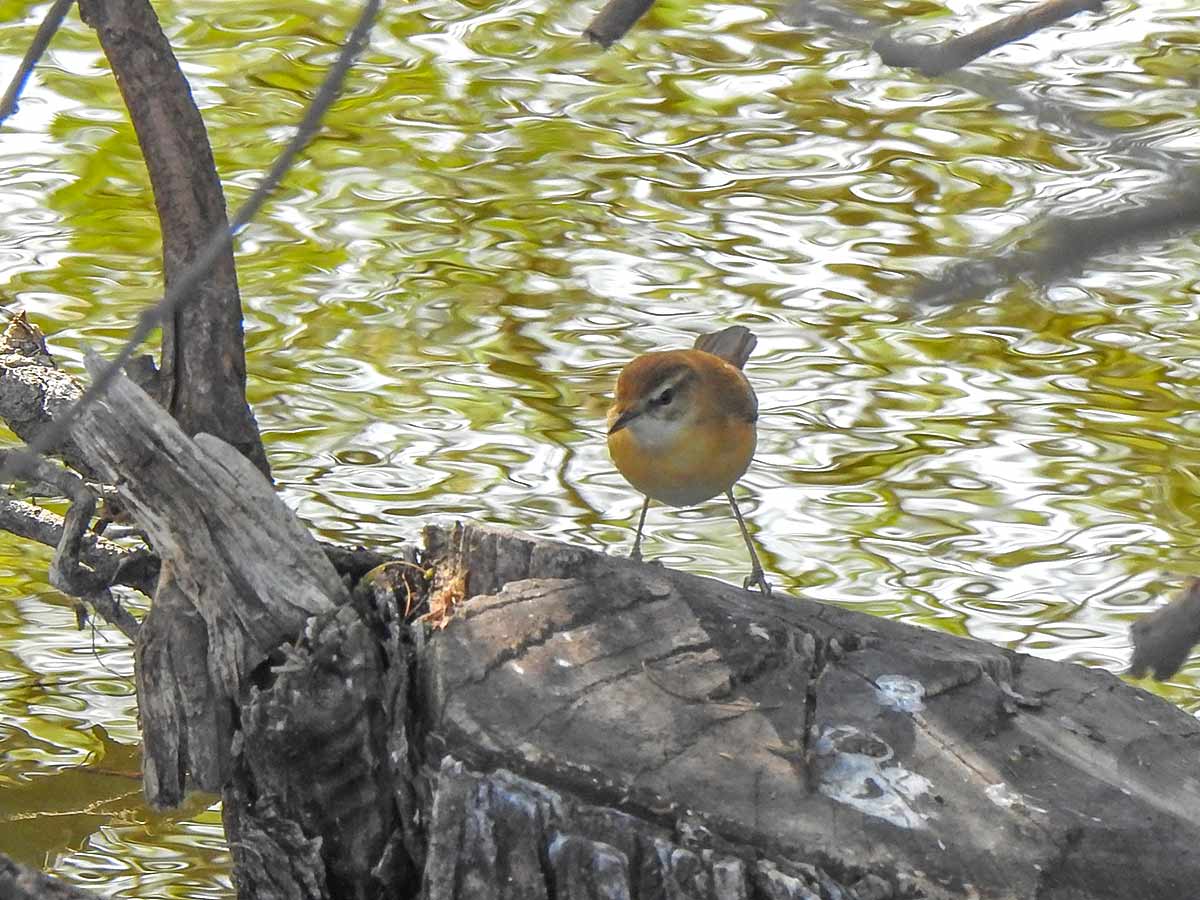
So I left that to Vinod who was trying to spot the uncommon plovers in that group. After few minutes, Vinod pointed me one pair and told they are Dunlins. When looked closely the Dunlins looked quite different from the other plovers. After the careful inspection of the plover flock we walked further and saw the trail continuing for a long distance. Suddenly there was a huge commotion in the bushes nearby and a wild boar emerged from the bushes followed by some ten piglets. It was so cute to watch them but at the same time we maintained distance as the Mama boar was very alert. Once they crossed the path, we proceeded to the watch tower.
Great white pelicans
We expected a very hot weather and surprisingly it was a cold windy day. So when we reached the top of the watch tower, our hats were flying. We enjoyed the top view of the sanctuary and searched for Black-necked Stork. While searching a flock of Great White Pelicans landed and they started hunting in pack.
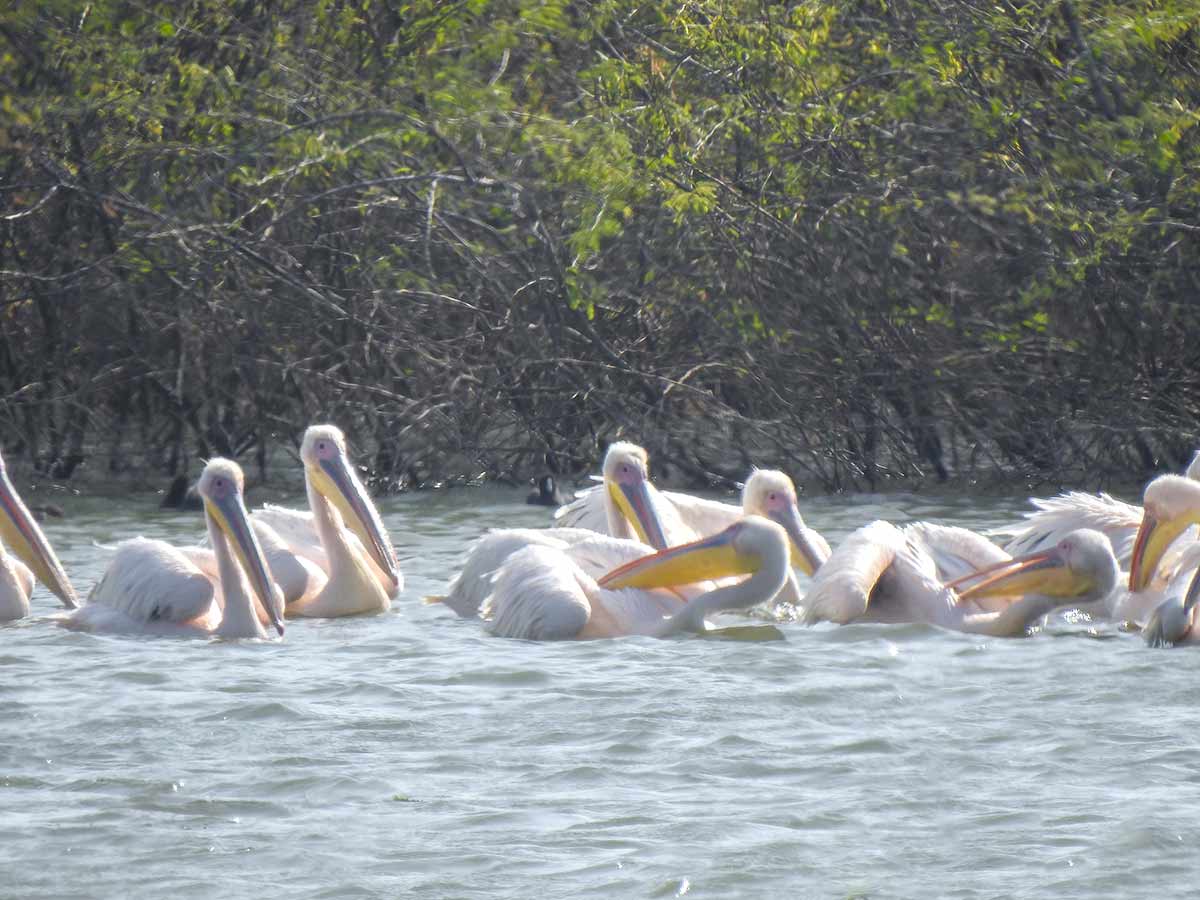
It was beautiful to watch them in that sunlight. We spotted even few Common Snipes but there was no sign of Black-necked Stork. The Park was huge and we decided to come back another day early morning even though our schedule was now very tight. We started walking back and Vinod tried to go near the sedges in one spot. He was searching for Rails, Bitterns but the huge Black-necked Stork who was standing hidden got startled and flew away. The Stork flew in my direction and I was stupefied seeing the giant bird flying towards me. The iridescent black on the neck was radiating and I realized that I had never seen a flying stork very closely.
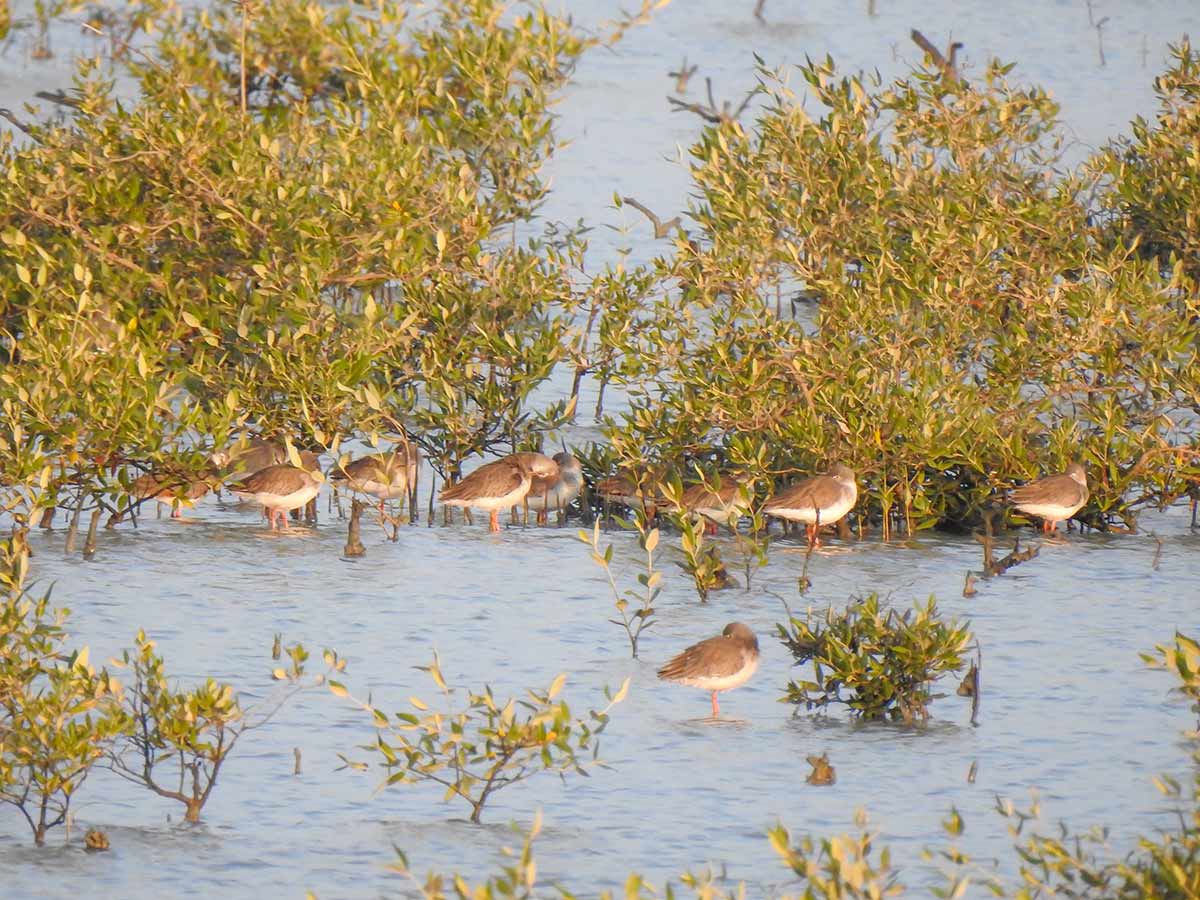
Vinod who came quickly to the trail watched a surreal scene with me and Black-necked Stork. He didn’t capture the moment digitally but he described that the scene looked like a painting with me looking at the Black-necked Stork hovering over me. Like I always say when we see Endangered Species, we feel happy and sad. This close encounter of this beautiful bird was really a very memorable experience in our Gujarat Road Trip. Having had a delightful experience we decided to head back carrying a beautiful memory. Now the ducks who were in the center started swimming and we saw few ducks, Greylag goose closely. We saw few Nilgais crossing the lake and they looked really majestic.
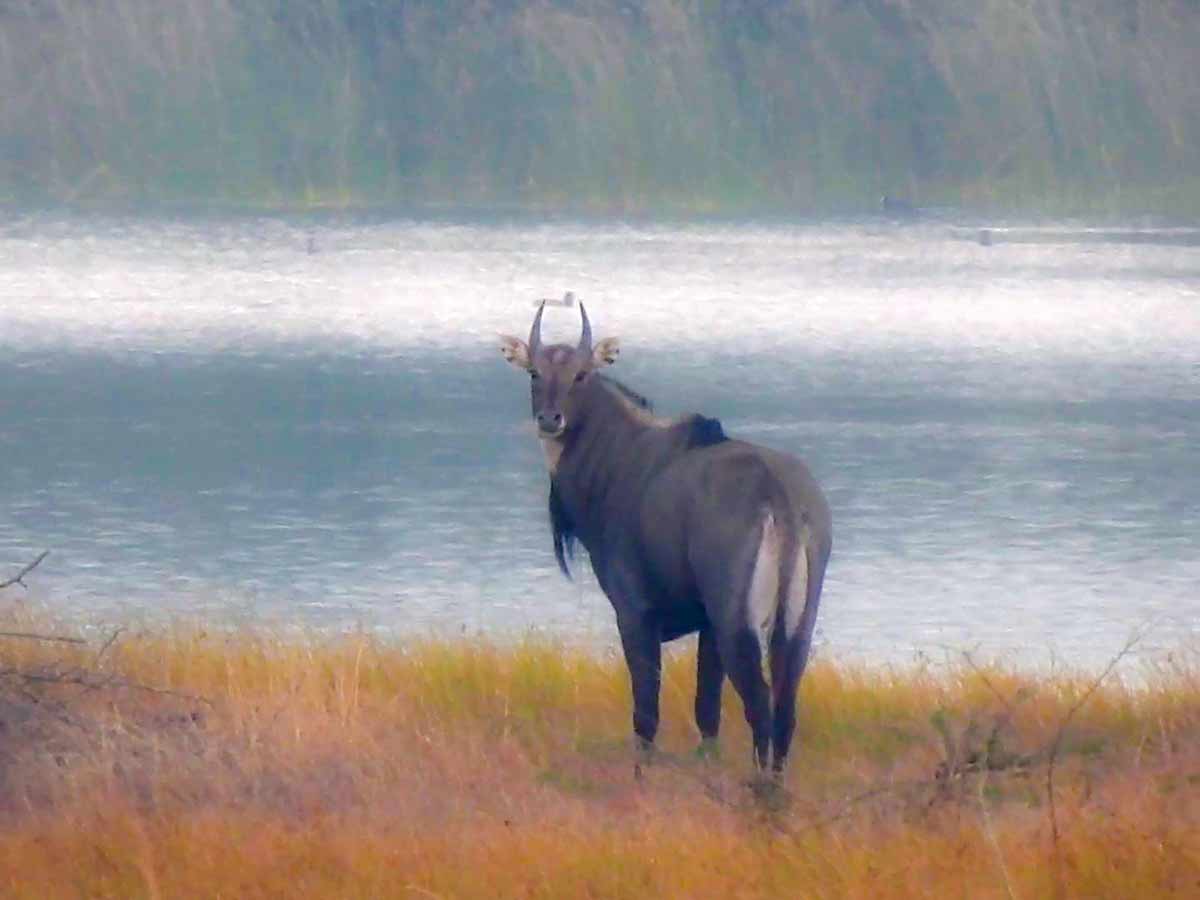
These largest antelopes are considered as pest in Central & North India which clearly indicates that the relationship between mankind and mammals is broken. When we went back to the entrance gate, the guard was chasing away the goats from the village. We decided to come back to the sanctuary after visiting the Narara Marine National Park.
But we ended up spending full day in Narara Marine National Park, so the next day before leaving to Ahmedabad we decided to do some early morning birding in Khijadiya Sanctuary. So we arrived at the Sanctuary on the last day in our Gujarat Road Trip. The lady in ticket counter recognized us and was pleased that we came back again. We got tickets for both the trail and decided to visit the car trail first. The guard in that trail was with us in the ticket counter, so he quickly cycled to the trail to open the gate. We felt bad for disturbing the old guy in that early morning but he was very enthusiastic to greet people from Chennai. He even knew few Tamil words and gave few information about the trail before allowing us inside. We decided to walk instead of drive and we stopped at the first waterbody.
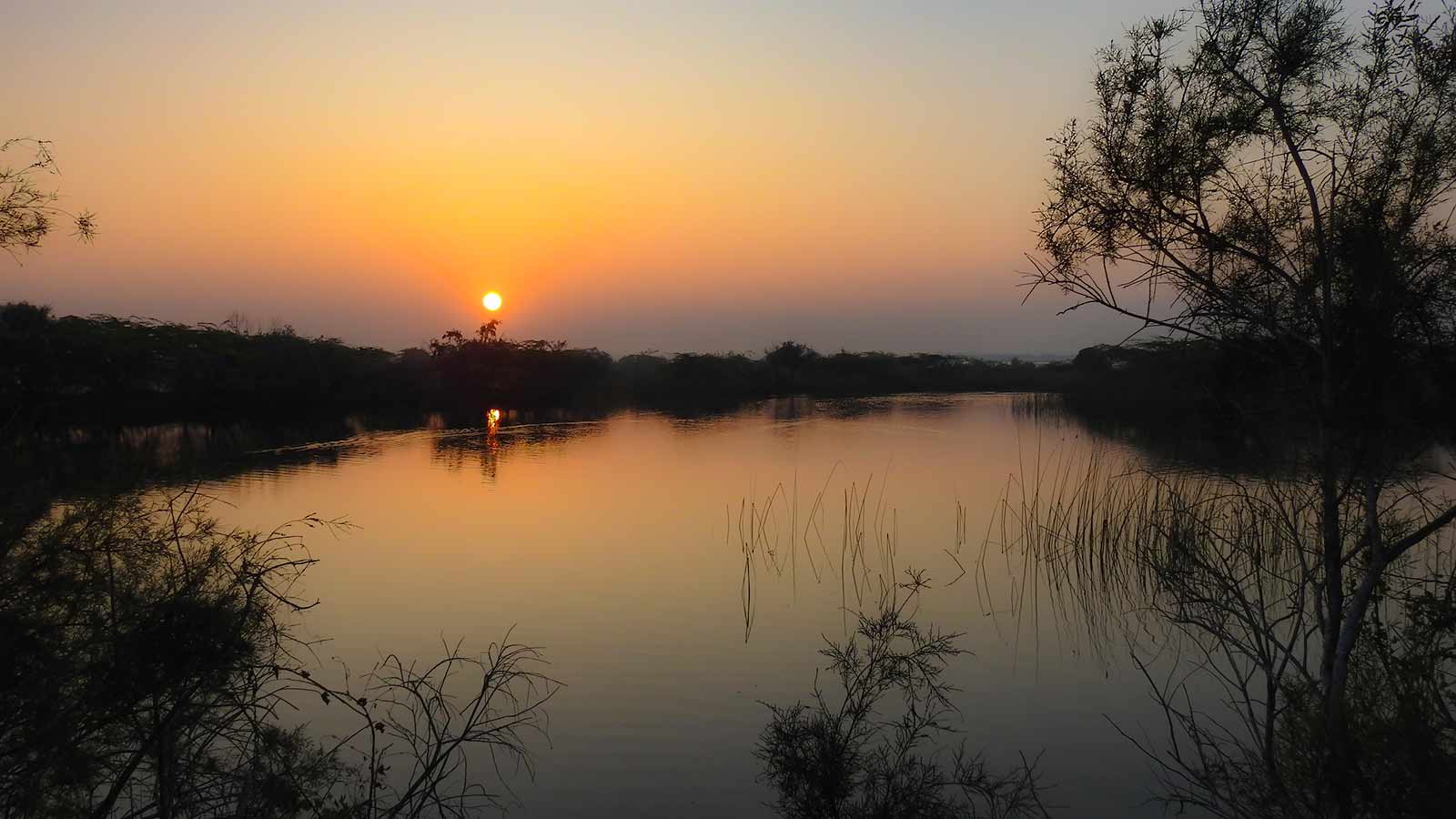
There were many ducks but the coots alarmed everyone upon our arrival. So all ducks flew far from away. This trail was different from the other trail we visited earlier as one end of the sanctuary was agricultural land. The size was also very small and we reached the watch tower quickly. We saw hundreds of coots in the lake and they all looked beautiful in the morning sunlight.
The Indian Jungle Cat Story
We decided to visit the other trail and check again for Black-necked Stork. We quickly returned back and in the first lake we saw Western Marsh Harrier circling around the island in the center of the lake. Vinod took few videos of the Harrier and we returned back. After few weeks, when we were seeing that video, we saw that the Western Marsh Harrier was circling above a Jungle Cat. We were watching the sky and totally missed the one that was jumping on the land. Does this mean we have really seen a Jungle Cat or we have just digitally seen it !! That was really a funny incident.
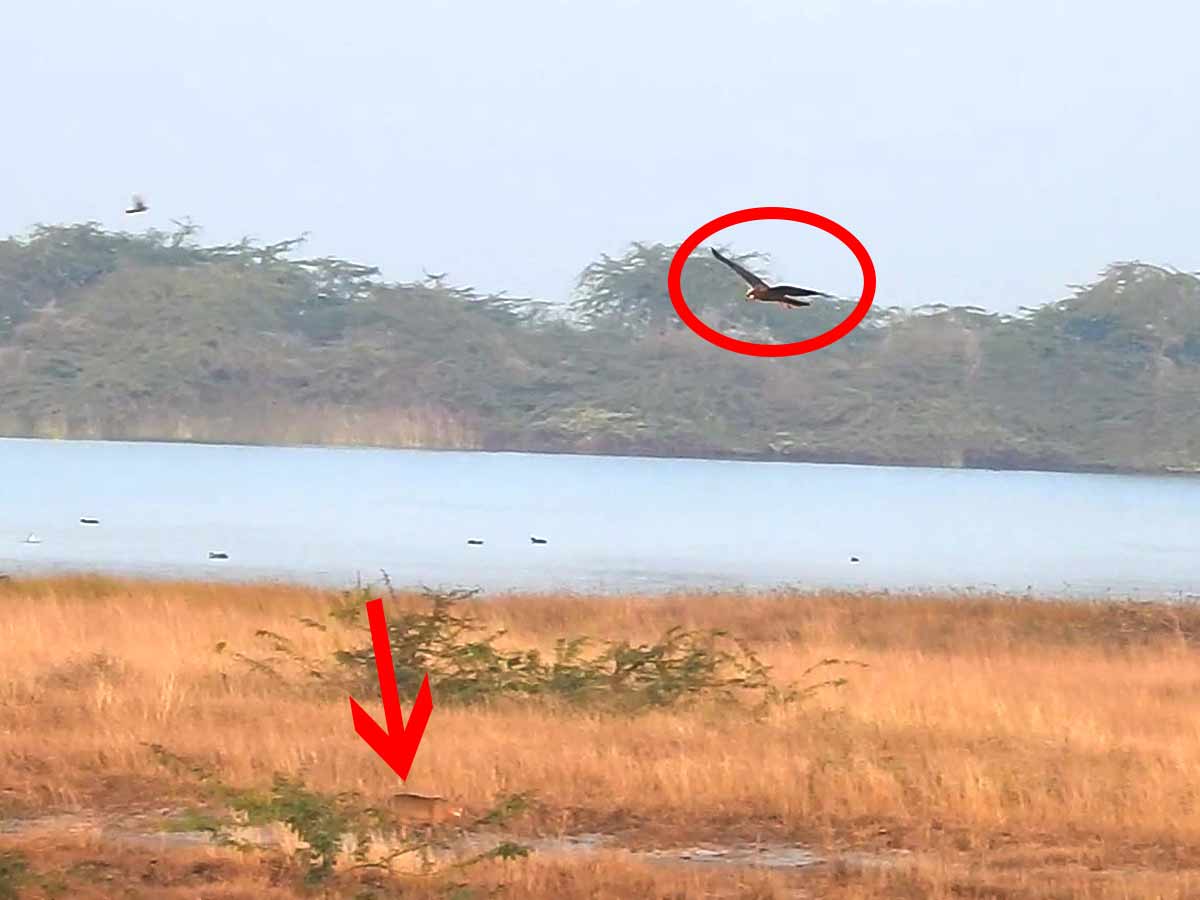
This incident was going to haunt us forever though in a funny way!! The Indian Jungle Cat is typically diurnal and hunts throughout the day. But all these animals are pushed to nocturnal now because of human activities. So seeing them in a morning light is very rare!
When we went to the other trail, the same guard was there. He was shocked to see us again but he was also pleased and smiled. He didn’t check our tickets strictly like the last time ! We quickly walked till the first watch tower and from the watch tower we spotted the Black-necked Stork far away. We didn’t get a good photo of him but having had the delightful experience the day before we were happy to see him just foraging in his habitat.
I think for the first time in human history we are creating digital memories in the form of pictures and videos to an extent that our real memories cannot cope up . In such an era any good memory which gets etched in our brain is a precious gift. I cannot show the image of an iridescent black necked stork hovering just a few feet away infront of me here because there is no picture. But what I learnt from the moment is that, when there is a beautiful event infront of you , don’t always try to see it through a lens.
There is something about being in the moment rather than clicking the moment. This was the last birding stop in our Gujarat Road Trip. We got many lifers in this trip ! We did get to tick off several in the checklist instead but the idea of the trip was to experience the birds in different terrains and that happened !
Rating Kijhadiya bird sanctuary !
Good
Kijhadiya bird sanctuary recently received some good funding hence special attention was given to this sanctuary. The waterbirds looked safe in the lake and seems like a real sanctuary for migratory birds. The staffs were very friendly !
Bad
The Little water left in the lakes were being diverted to the agricultural fields next to the sanctuary.
Ugly
One section of tidal flats were turned to farmlands and salt pans, thus permanently changing the terrain of the area.